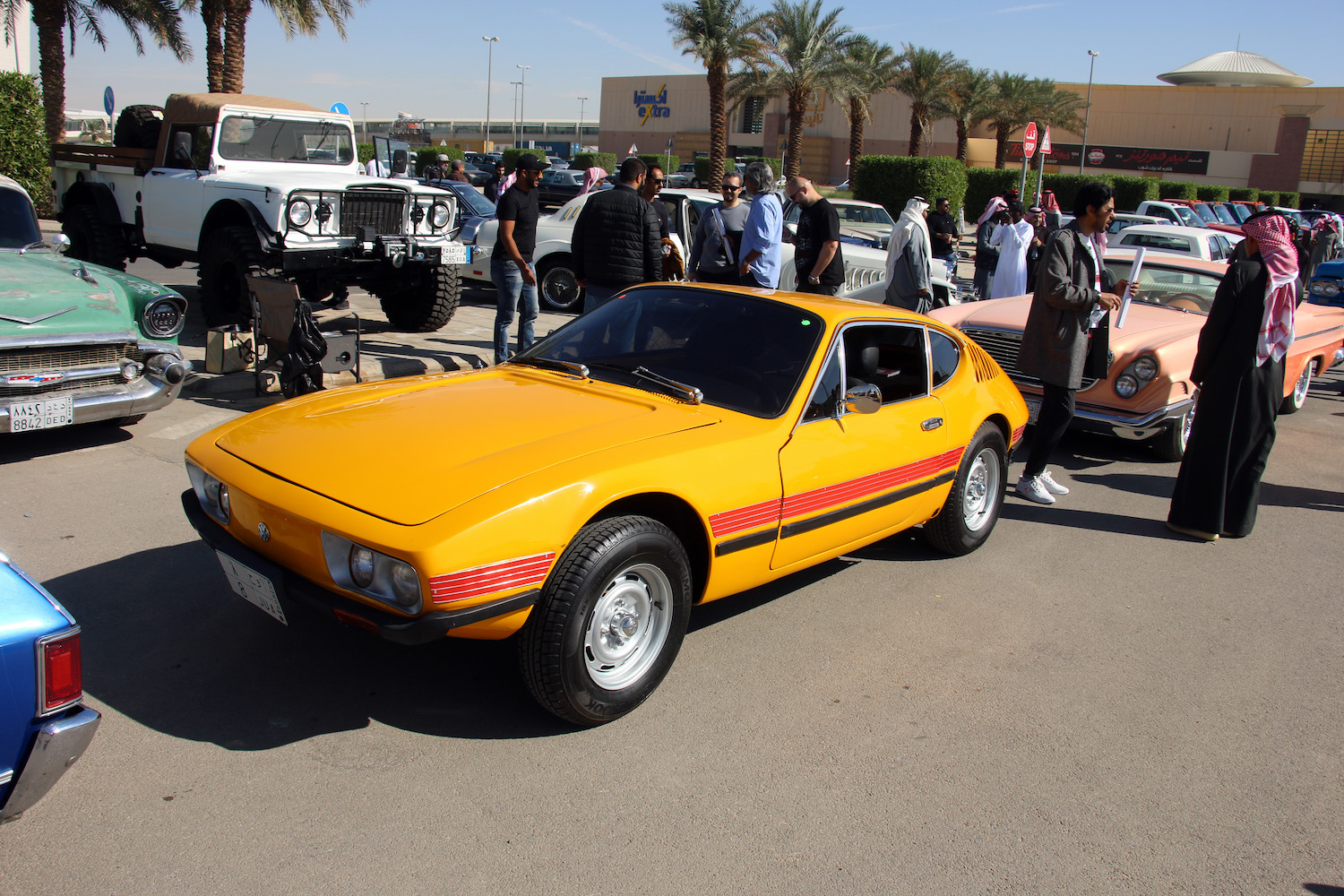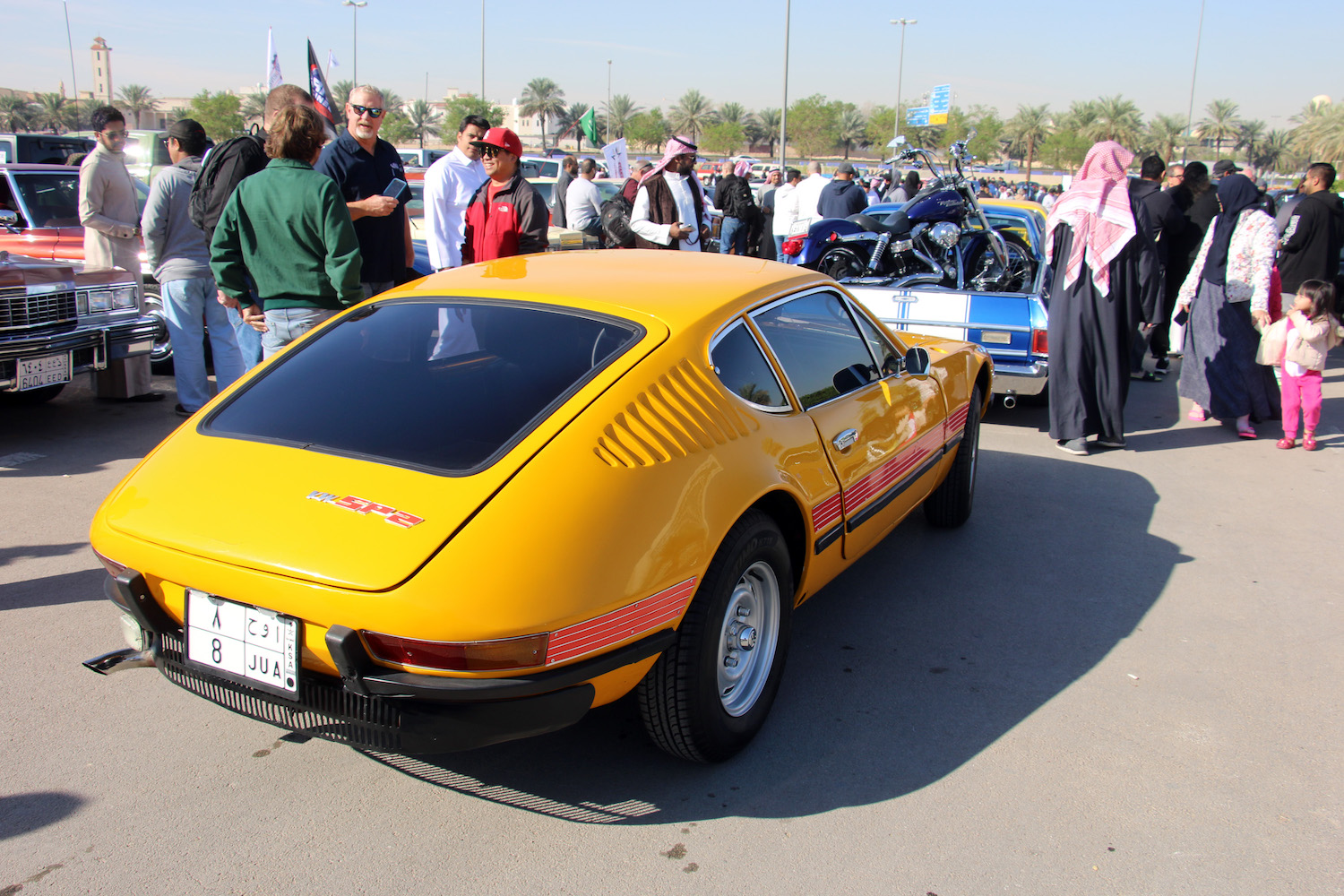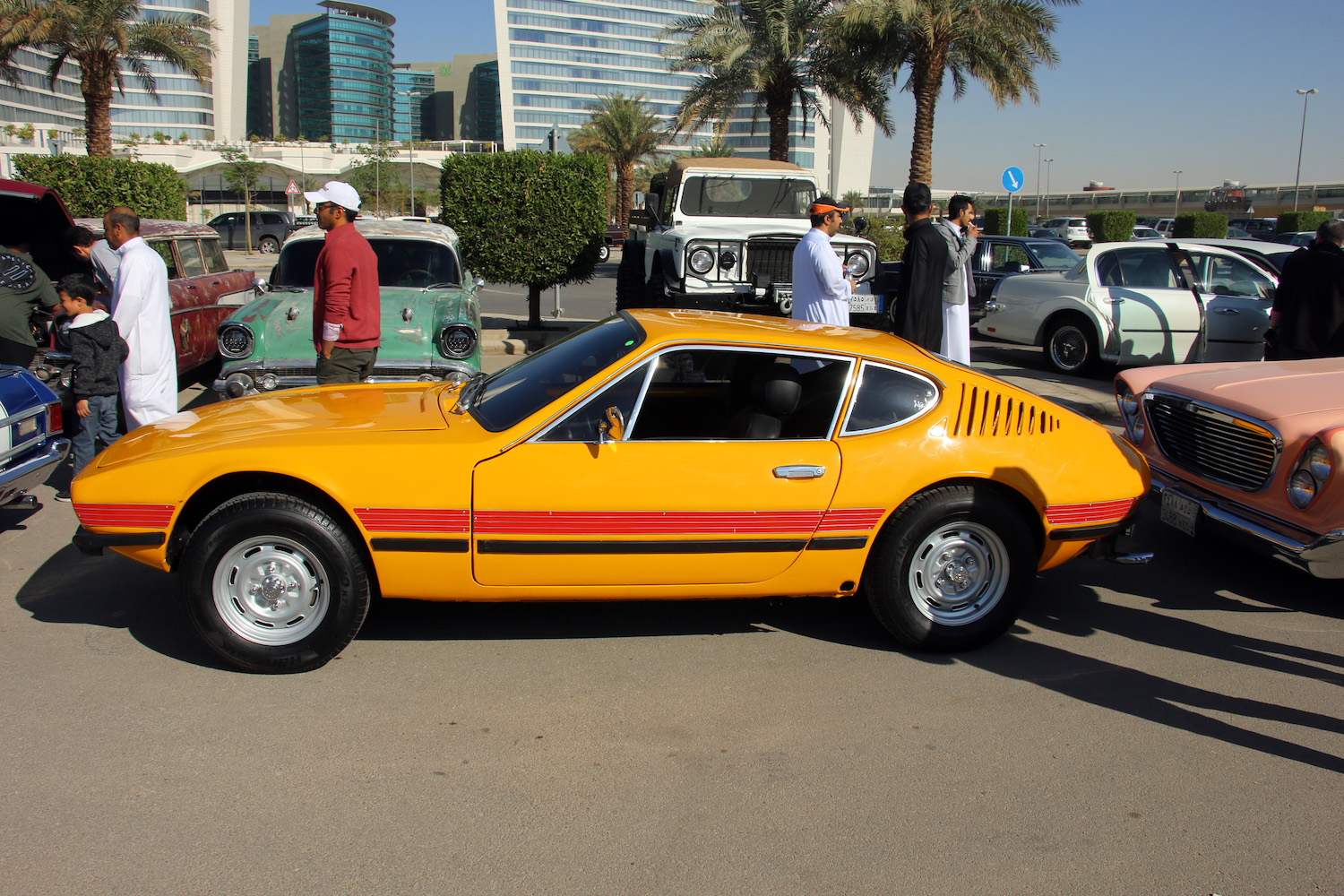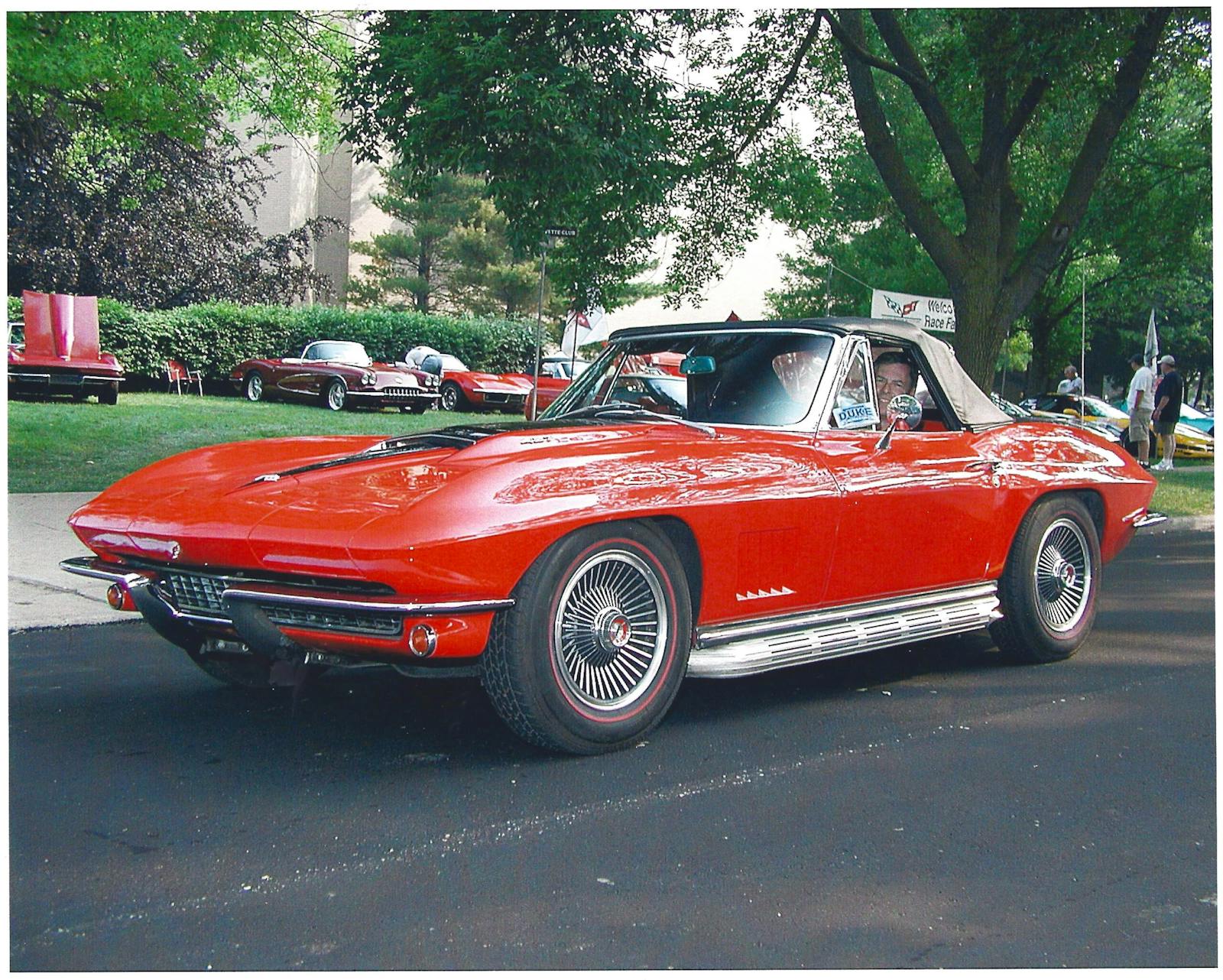Is this Saudi Arabia’s most unexpected collector car?
Saudi Arabia is changing, in some ways that are subtle and others which are obvious. This past September, the Kingdom formally opened its door to tourism, which it now encourages. But that doesn’t mean the region has no experience with foreign faces. The border has always been open for those who arrived with a work visa, most of those visas being in the obvious fields of oil drilling and resource extraction.
Which is how an Italian engineer named Luigi came to Riyadh, the Saudi capital, in 2014. He was not suspecting at the time that in the following five years, he’d also have to learn some Portuguese. And it was all thanks to a Volkswagen.

By the late 1960s, Volkswagen’s Brazilian arm found itself in a bit of a pickle. Wolfsburg had discontinued the Karmann Ghia while at the height of its power, Brazil’s military government banned car imports, along with adult magazines like Playboy and international news publications that could cause trouble. While fans of fiberglass sports cars could still buy the locally made Puma GTs, Volkswagen do Brasil offered a much better proposition—a product championed by German Rudolf Leiding.
Penned in-house by Marcio Piancastelli, José Vicente Novita Martins, and Jorge Yamashita Oba, the two-seater known initially as “Project X” was first shown in 1971. It went into production for 1973 as the Volkswagen SP2 (an SP1 model with a smaller engine was also offered earlier), by which time Leiding became the Chairman of Volkswagen at home in Germany.
These Brazilian sports cars looked like no VW before. They weren’t universally respected, however. As Volkswagen points out, “while ‘SP’ stands for ‘Sao Paolo,’ locals soon gave it the nickname ‘Sem Potência.’ That’s Portuguese for “without power,” since the car’s 74-hp flat-four meant the trip from 0 to 60 mph took a minimum of 16 seconds.”

The situation was even worse in the SP1. While these long-hooded coupés were all based on the VW Type 3 chassis, the earliest versions had a 1.6-liter air-cooled engine good for just 65 horsepower. This model was apparently discontinued after just 88 units.
The 1.7-liter SP2, meanwhile, with its 74-horsepower flat-four, became something of a hit. With its sporty lines, leather seats, and three-spoke steering wheel, Volkswagen do Brasil managed to churn out 10,205 in total, despite the fact that Leiding couldn’t sell them elsewhere abroad due to both political and technical hurdles. In the end, a few hundred still made it out of Brazil, but major markets like Europe and the United States weren’t on the list, mostly due to the SP2s’ low headlights and resulting failure to meet regulations.
What Luigi found in Saudi Arabia, to his surprise, was in fact a local car. A final-year 1976 Volkswagen SP2, to be precise, allegedly owned in period by the Brazilian ambassador to Saudi Arabia. Saudi plates, registration, the whole deal. A real white elephant of international diplomacy.
After being long neglected under the desert sun, this air-cooled sports car needed a bit of attention once Luigi bought it. And then some.
20200124213427)
20200124213409)
20200124213352)
20200124213338)
Luigi, wearing an Alitalia jacket and the Saudi-standard sunglasses, told me that although he is familiar with VW because of his six-volt Beetle back in Italy, restoring the Volkswagen SP2 has been a huge challenge. Not necessarily from a mechanical standpoint, but rather because parts are very hard to find and communication with Brazilian vendors can be troublesome. As it turns out, the locals prefer not to export their cherished SP2 bits, be that to Italy or Saudi Arabia.
20200124213532)
20200124213552)
20200124213651)
20200124213712)
Still, as an engineer, Luigi wasn’t going to be intimidated by his mission. After years of hard labor, the resulting sports car speaks for itself. What is quite possibly the only Saudi Volkswagen SP2 isn’t restored to perfect concours-quality condition, but it’s a solid runner with a happy-running rebuilt 1.7-liter engine, a bright paint job, and a luxurious leather interior. You’d be forgiven for forgetting that a car with this much sporty style has just 74 hp.
Not a small feat given this gem’s found state.
20200124213810)
20200124213833)
20200124213744)
Wearing a mustard yellow shade instead of the previous beige, this SP2 now has its signature riveted aluminum trim sprayed red, alerting onlookers that the car’s name they are trying to recall is indeed one of the rarest beasts within hundreds, if not thousands of miles.
Before deleting the leaky sunroof, Luigi also got rid of the tacky rear wing that must have been welded onto the car by somebody in the 1980s, probably while wearing a blindfold. The SP2’s bumpers are very slim and perfectly integrated with the rubber strip on the side, just like the taillights with their painted aluminum trim. It’s fitted with 185/80 R14 tires, chosen so handling rough roads wouldn’t be an issue. Yet the cabin has an unexpected air of refinement. Things you won’t find in a VW Type 3 include a wooden handbrake lever and shifter knob, a highly optimistic 200-km/h speedometer, a voltage gauge, and a slotted three-spoke steering wheel wrapped in leather.
For a moment, though, let’s set aside what Luigi’s 1976 Volkswagen SP2 looks like today, and what a sad state it was in just five years ago when he found it. When it comes to this car’s prior life, it’s logical to conclude that the evidence supports the story that it was the Brazilian ambassador’s daily or weekend ride. Given its previous condition and Saudi plates, the SP2 can’t be a later import; plus, people haven’t been allowed to register their older and/or modified cars in the Kingdom for over a decade.
Then, to my genuine surprise, on the Internet I found an image taken in 1982 that appears to depict the front of a Land Rover dealer in the Jordanian capital of Amman.

And what’s that parked on the street? Most clearly it is a beige Volkswagen SP2, just 900 miles from Riyadh, in a neighboring country’s capital city. Could this mean the ambassador went for a toasty road trip in early ‘82?
Certainly it’s possible. But given that Volkswagen do Brasil sent many its very limited export SP2s to both African and Arabian countries (due to these regions being less picky about headlight heights), your guess is as good as mine whether the image features Luigi’s exact car.
Luigi, and all other SP2 owners out there, may be happy to learn that last spring, an ex-museum-piece 1974 Volkswagen SP2 sold for $33,600 in Mississippi, blowing past its estimate of just $3000–$5000. And by the looks of it, Luigi’s Saudi wonder is the more original of the pair. No question it has a unique history, too.

















